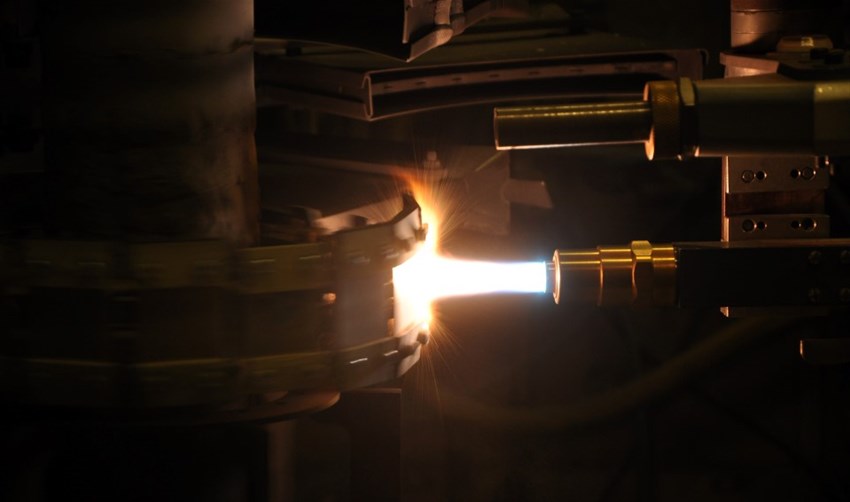Prestigious assignment to the university from the unique European Spallation Source facility in Lund
02 Dec 2019
University West's expertise in thermal spraying will play a crucial role in the unique European Spallation Source (ESS) linear accelerator research facility in Lund. "We are proud to contribute our expertise to one of the world's few high-power neutron-based research facilities," says Shrikant Joshi, Professor at University West.

The new materials research facility ESS is being built just outside the center of Lund. Here, researchers from all over the world will conduct advanced studies on different types of materials at the atomic and molecular level. The emerging knowledge can be used, for example, to produce new materials and to improve existing materials.
The facility will be based on one of the world's most powerful neutron sources and will function as a giant microscope where neutrons are used to analyze samples at atomic and molecular levels. Simply described, proton beams with an average power of 5 megawatts are shot at a very high speed on a target that looks like a spinning wheel. As the beam collides with the target wheel, neutrons are released that are used for material analysis. The wheel structure is made of stainless steel and it supports a tungsten block which is the spallation material. The entire assembly weighs about 5 tonnes and has a diameter of 2.5 meters.
University West has been selected as an ESS partner to accomplish the challenging task of developing a luminescent surface coating that will light up when the high-power proton beam hits the target. This coating is critical to ensure tight control of the proton beam profile delivered to the target to ensure reliable and accurate delivery of neutrons to the vast array of scientific instruments that will revolutionize future research capabilities.
– We are going to spray this coating on specific parts of the target wheel. In this way, uninterrupted access to the neutron source for various tests can be assured”, explains Shrikant Joshi, who has long research experience in thermal spraying.
University West was awarded the assignment in 2016, following a visit by an ESS team with a former visiting professor at University West, Sanjay Sampath from Stonybrook University, USA. Sanjay has done similar work for the proton beam target at the Oak Ridge National Laboratory’s Spallation Neutron Source (SNS) in the USA. However, the coating to be eventually developed for ESS must live up to several extremely tough demands resulting from the significantly higher power radiation environment.
– We plan to initially use the same material and the same flame-spraying technology used on the SNS system's target wall. This is because it is a fully evaluated solution that can be adapted with confidence to work well during the commissioning stage of ESS. However, in the long term, we have the ambition to develop a more advanced coating with new luminescent materials. This is providing not only better performance for the ESS beam-on-target imaging system, but also opening possibilities for many more potential applications, says Shrikant.
The work on surface coating of the actual target wheel and other components will either be carried out on site at the ESS facility or at one of University West's partner companies in Malmö, Thermal Spraying & Engineering (TSE). TSE has all the necessary infrastructure and Stefan Björklund, Research Engineer at University West, will be responsible for the practical implementation.
– A large number of tests have been carried out on our coatings by ESS and University of Oslo, to enable us to finalize exactly the right conditions to deposit the required coating, says Stefan Björklund.
– At the beginning of next year, we will perform coating trials on dummy parts that will simulate the target wall and the proton beam window. At present we don’t know when the final work will be done, but it is likely to be sometime in 2021, says Stefan Björklund.
– It feels great to carry out this type of assignment and to collaborate with the researchers at ESS in Lund. The area of application is very interesting, and this effort can lead to new research projects and collaborations, says Stefan Björklund.
This coating development effort is being carried out in close collaboration with SNS, Stony Brook University, USA and Oslo University, besides ESS.
FACTS ABOUT ESS
ESS is planned to receive the first researchers in 2023. When the facility is fully operational, approximately 3,000 researchers from around the world will use the facility each year. The neutron source will be an invaluable tool for researchers in widely different areas such as medicine and health, climate and transport, energy and the environment - and food and cultural heritage.
The ESS is governed by a European Research Infrastructure Consortium (ERIC), with 15 member and observer countries. Sweden is the host country together with Denmark and, thus, has a great responsibility for developing the facility.
Contact: Shrikant Joshi, Professor in Production Technology, e-mail: shrikant.joshi@hv.se


